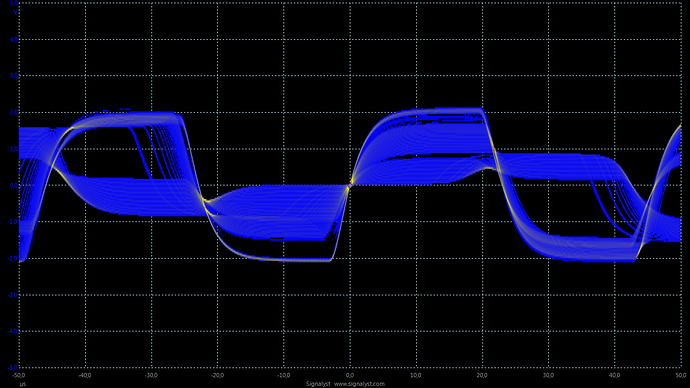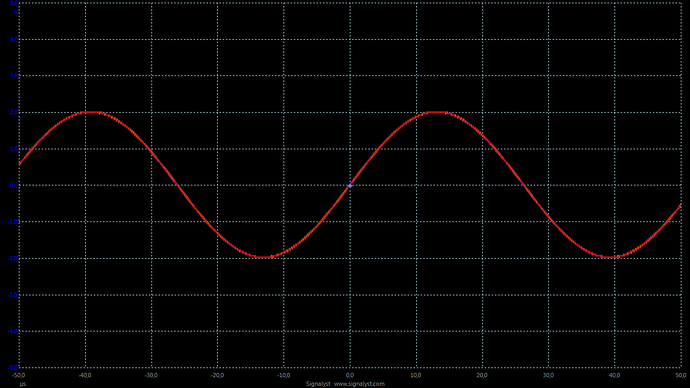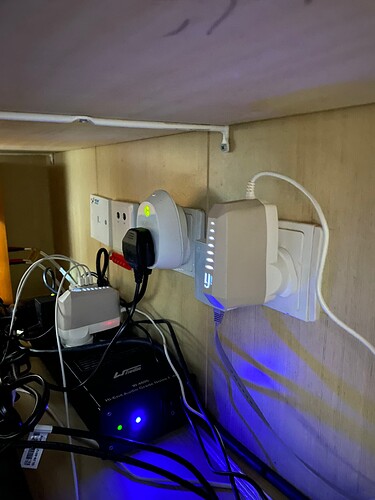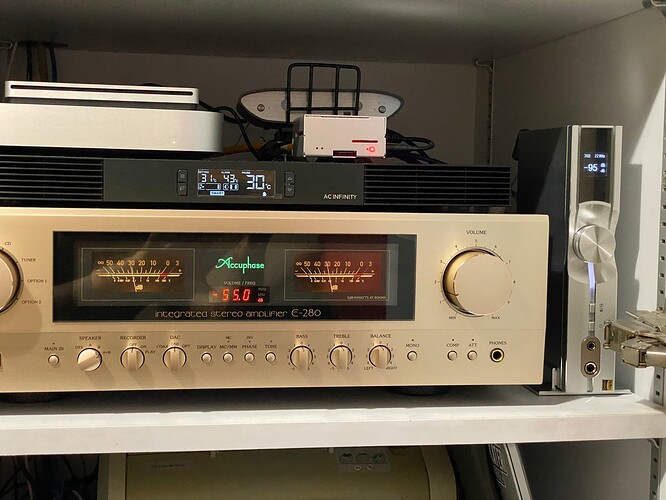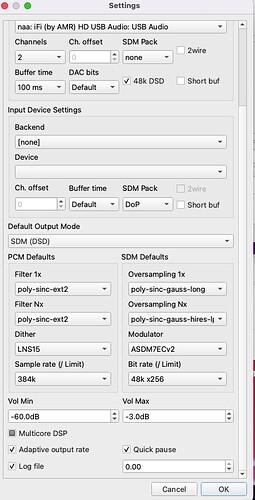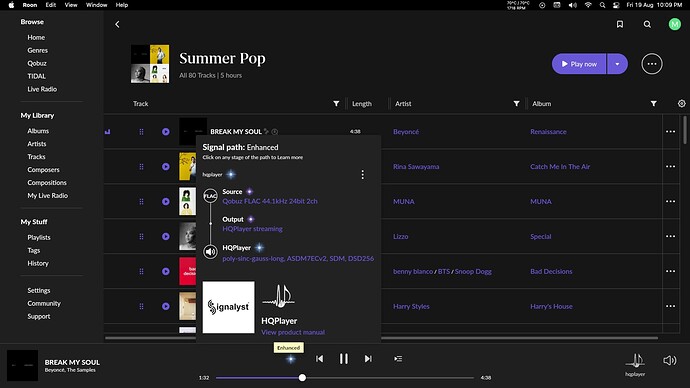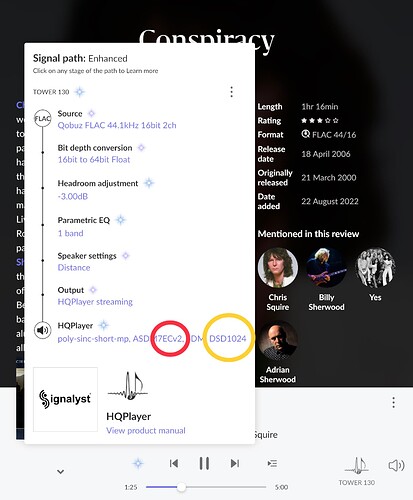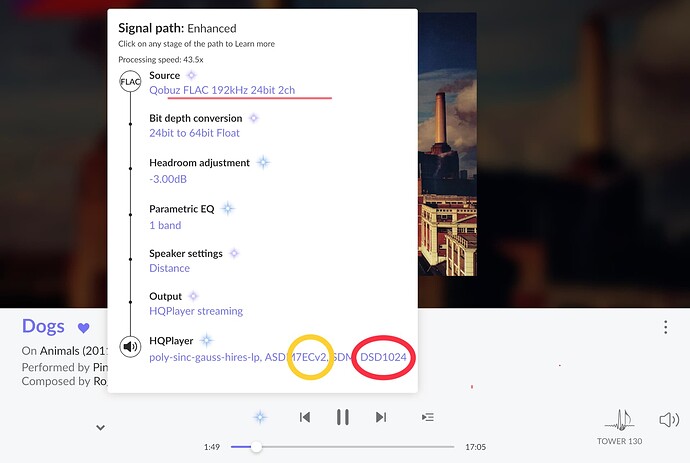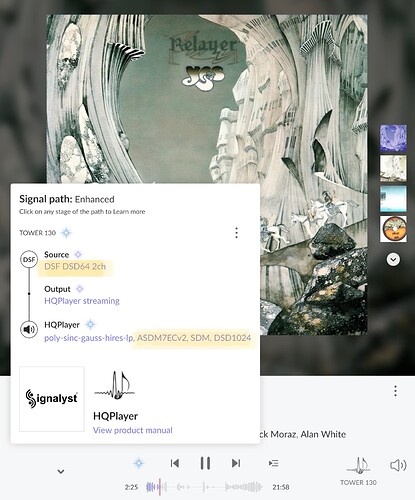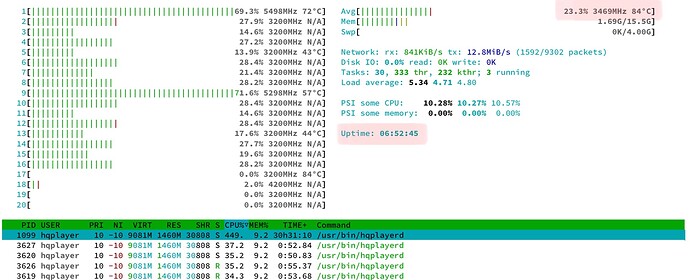A great summary. I’ll try some of those over the next few weeks:musical_note:![]()
![]()
It will take a while to initialize, depending on your conversion ratio. Especially if you are converting between rate families, and particularly form 44.1k base to 48k base, it can take a long time. From some minutes to couple of days, also of course depending on your CPU power. For simple integer factors it is much faster to initialize, but can still easily take some 10 - 15 seconds.
For fun, try for example poly-sinc-short-mp or poly-sinc-gauss-short
Current default settings which I find fairly generally applicable:
1x=poly-sinc-gauss-long
Nx=poly-sinc-gauss-hires-lp
Instead of running PCM mode, running at DSD256 or DSD512 using ASDM7ECv2 gives me more depth and weight. Not anymore flat and weightless “flap-flap” bass like with PCM mode. Although at 32x (1.4/1.5M) output rates this difference becomes smaller.
You can almost see the bits, since there’s practically no reconstruction of the original analog waveform taking place. A bit like listening to old dial-up modem handshake.
Just a lot of distortion and transient amplitude/noise modulation because very coarse sampling points and audio signal events are constantly shifting relative to each other.
Here’s an example of 19 kHz sine wave played on NOS DAC at 44.1 kHz, you can see that the signal is really unstable and weak (mostly blue):
Here’s same source data, but this time running at 384 kHz sampling rate, you can see that you get much cleaner signal (although still could be much better):
Do these problems show, for example, in the case of the Holo May in the measurements posted by stereophile?
Yes, you can see it for example here in Fig 2, 3 and 16:
And in the comments, quite a bit about lack of reconstruction filter and how rough the output is due to that.
I see. Intermodulation products seem to fall below the audibility level though. I wonder if I would pass a blind test between my current preferred setup in hqplayer (DSD 256, ASDM7ECv2 modulator, ext2 filter) and the NOS playback in May.
Have you tried something simillar with your Spring 3?
Note that intermodulation levels are what you get after AudioPrecision’s input anti-alias filter and with it’s analog stages and ADC. So in those cases, the analyzer ADC’s anti-alias filter is acting as your reconstruction filter. Although with incorrect cut-off frequency, so some of the junk gets through.
Your amplifier output may be different. Especially if you use any class-D amplifier, you should be very concerned, because these are susceptible to aliasing, similar to ADCs. And they don’t except such amount of HF content on their inputs.
But regarding audibility, already the NOS HF roll-off is easy to spot.
Since those Stereophile measurements are not designed for these kind of things, you need to “read between the lines”.
352.8/384k rates sound bad and flat. 705.6/768k gets better, but still flat and congested. At 1.4/1.5 MHz rates with ladder linearization through LNS15 it begins to get closer to DSD256 from ASDM7ECv2. Still some flatness and congestion left, but already listenable.
If you compare PCM vs SDM on Holo Audio, remember to set gain compensation to -6 dB in HQPlayer settings.
Is this true for any DAC? I’ve typically left my gain set to -3dB on both PCM and SDM. I’m currently using a Pontus II DAC, and I really enjoy going back and forth between PCM and SDM. Should the gain setting be different between PCM and SDM?
Thanks!
No, the PCM gain compensation depends on a DAC (or used DAC chip). For Holo Audio, this is -6 dB. It compensates for the level difference between PCM and DSD in the DAC output.
This is correct volume control setting. PCM gain compensation setting can be found from HQPlayer settings and is separate from the volume control.
It is good idea to compensate for the level difference, especially if you are doing comparisons or if you are otherwise switching between PCM and DSD outputs. Note that this applies only to different output formats, not for different source formats.
I also have the Denafrips Pontus II DAC. Is there some type of methodology to determine how to arrive at the correct PCM gain compensation for the Pontus II DAC?
It would need measuring PCM vs DSD output levels with a test signal. But IIRC, on Denafrips both output same level.
Owning a Pontus II, my unscientific experience of switching between PCM and DSD has me setting the PCM gain compensation value to -3.
Thanks for the support both here and via email @jussi_laako . Bought the license.
I have just Ares II. I will re-check when I get back to the office.
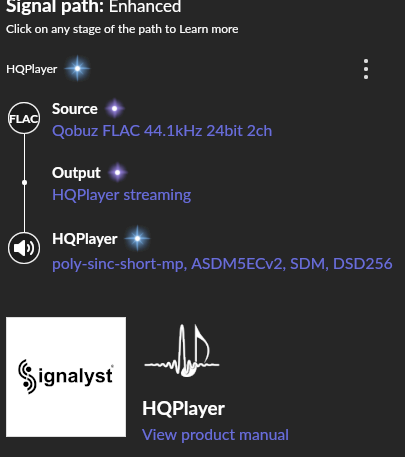
Roon Core Surface 7 i5 8gb
HQP i7-9750H 16gb RTX 2060
i7 and Cuda about 30%
Nice work @jussi_laako
edit. Sorry for big pic and cuda is for oratorys PEQ (I think)
I have also a similar setting with Mac Mini and NAA, It’s best solution for getting most of the DAC potential. I added a ifi XPower to the RPi4 and a iPurifier to the usb. I do feel “cleaner” signal.
My HQPLAYER settings
I got an Ares 2 a few days ago as well. Running PCM 1.536 with poly-sinc-gauss-long / LNS15 in NOS mode and dac bits set to 16 which sounds great to me. What benefit does the poly-sinc-gauss-hires-lp offer compared the poly-sinc-gauss-long?
I think I cracked it !!! ![]()
![]()
![]()
This:
And this:
And that with FIR2 and XFi:
Hours of stable playback with no shuttering → 7ECv2@SDM1024 !!!
Ta-dah!!! ![]()
![]()
![]()
In ROON path you see some DSP processing - this is largely not reccomended practice with HQP, but 7ECv2@1024 takes totally all from my CPU, anything above upsampling in HQP makes it hick-up, so I thought why not DSP in ROON? Parallelisation?
This is how it looks from inside on my i9-12900K CPU (NO GPU):
Temps are on average around “low” 80s. Needless to say it is heavily overclocked. Two cores at 55x… So I’m still in fine tuning mode (we are talking tuning core voltage in third digit after comma), but here you see my “endurance” run of almost 7h non-stop music. Actually it is ROON radio with different sources, mainly 44,96 rarely 192 and DSD64…
As for the filter selections it gave me stable playback like this:
1x: short-mp, gauss-long, gauss-xla
Nx: short-mp, hires-lp, hires-mp
Frankly these are what I use regularly anyway, can’t complain.
And it shutters on:
1x: ext3
Nx: xla, ext3
As for my personal general perception of 7ECv2@1024, two things are striking a) incredible timbre realism - the instruments sound very real, especially on “simple” combinations of duos, trios or small jazz groups b) insane channel separation in soundstage and very emphasized feeling of “space” or rather “stereo”, I would not call it a 3D effect but more of amazing clear placement of instruments inside the stage like “far right”, “far left”, middle and anything in between… once you hear 7ECv2@1024 you can’t go back… it’s addictive.
Loud gasps from the audience

Accurate af
Love the music choice….Yes
